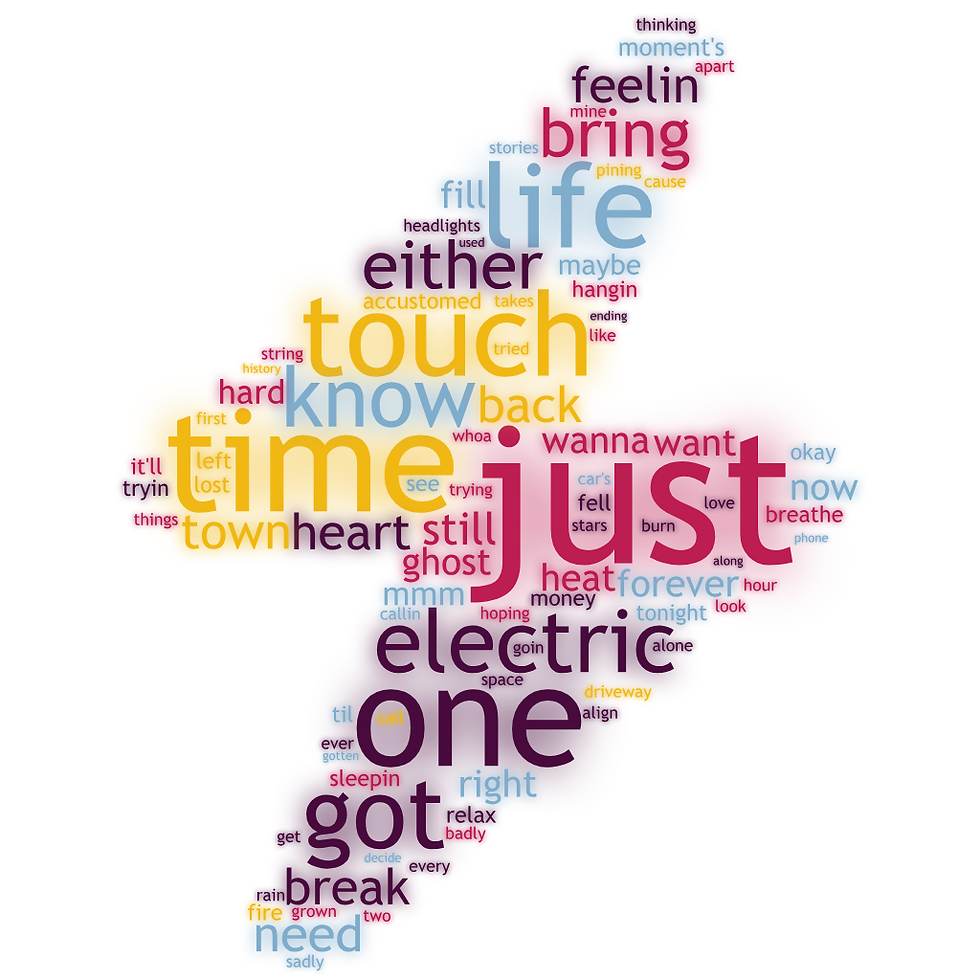The Shocking Truth: Metaphor Sparking Hope in Electric Touch
- Taylor Swift Scholar
- Aug 17
- 3 min read
The Basics:
Taylor Swift attempts to “breathe” and “relax” in the hour before a first date. She recalls how past relationships have ended in sadness, but hopes that it will work out “just one time.” Swift’s suitor, Fall Out Boy, has similarly been trying to find love to no avail. He also hopes that he will “get it right / just one time.”
Literary Device: Anaphora
Taylor Swift opens Electric Touch with anaphora – the repetition of the same word or phrase at the beginning of each line. In this case, she repeats “just”:
Just breathe, just relax, it’ll be okay
Just an hour ‘til your car’s in the doorway
Just the first time ever hangin’ out with you tonight
This rapid-fire repetition creates a sense of anticipation. It also points forward to the final phrase from each verse: “Just one time, just one time.” The short, repetitive bursts of “just” at the beginning of the song evoke anxiety. The later usage uses “just” to kindle hope – the narrators need love to work out “just one time.”
Analysis:
Electric Touch relies heavily on the theme of electricity mentioned in the title. Electricity is a naturally-occurring form of power that can either kill you or be harnessed in order to enable technology that is essential to modern civilization. A romantic spark, Swift posits, can similarly lead to significant harm or true love. Swift enumerates the options in the chorus: “All I know is this could either break my heart or bring it back to life” and follows them with an evocative metaphor: Got a feelin’ your electric touch could fill this ghost town up with life.” Swift imagines herself as a dusty, abandoned city that is brought to life once again through the addition of electricity. This phrase simultaneously calls to mind a body that is brought back to life by the electric current of defibrillation.
Swift, a noted epistemologist, presents a couple of options for how to understand and behave when facing a romantic spark. She begins the song with a rationalist understanding, writing: “I’ve got my money on things goin’ badly / Got a history of stories ending sadly.” Swift’s past experience of dating has been negative, leading her to extrapolate that this date will also conclude in tragedy. Extrapolation, however, can be unreliable. Swift pivots to metaphor as an alternative means for understanding her situation. In the first verse, Swift compares dating to fire. Like electricity, fire can be an agent of destruction and death or it can be harnessed to provide heat and light. Swift ends the verse hoping that this date will be the one time that a romantic spark is a creative force rather than a destructive one. She is “still hoping that the fire won’t burn me / Just one time.” Swift chooses an epistemology of hope. She bases her attitude on a careful observation of destructive forces in nature rather than her direct experience, which has been exclusively negative.
Swift’s date, meanwhile, hopes that the environment is right for the fire to burn. Instead of worrying that he will go up in a blaze, he worries that the spark will fizzle out in the absence of combustible material. His past attempts at romantic love have resulted in loneliness: “every time I tried for love, it fell apart / I’ve gotten used to no one callin’ my phone / I’ve grown accustomed to sleepin’ alone.” Swift compared a romantic spark to a fire – her date, “left in the rain,” hopes that fire will not be extinguished. Like Swift, her date knows from past experience that the likely outcome is sadness, but he also chooses an epistemology of hope, recognizing that “all it takes to get it right is / just one time, just one time.”
Dating is like flying a kite in a lightning storm – it could fry you to a crisp or lead to a discovery that alters the course of the future. In the bridge, Swift has totally abandoned rationality: “I was thinking just one time / Maybe the stars align / And maybe I call you mine.” Swift has decided to move forward based on knowledge fueled by hope and a sense of destiny rather than knowledge dampened by past outcomes. Perhaps this epistemology of hope is what is needed for a successful date. Swift has created an environment within herself that will conduct the spark or feed the flames rather than extinguishing them. The final image of the song is two headlights in a driveway – an image of electricity that has been harnessed appropriately in order to illuminate the road ahead.

Comments